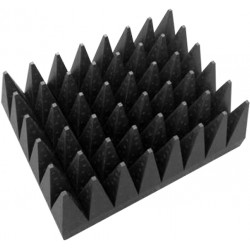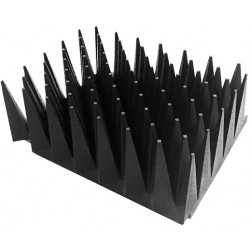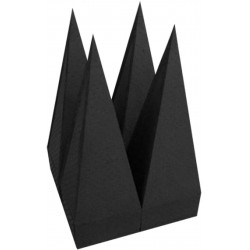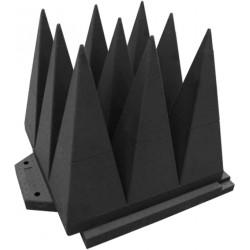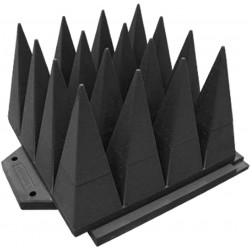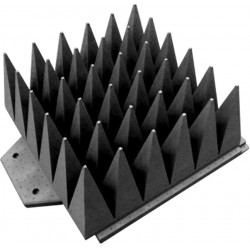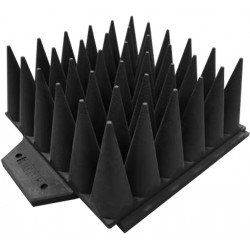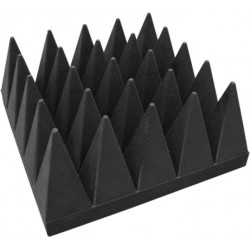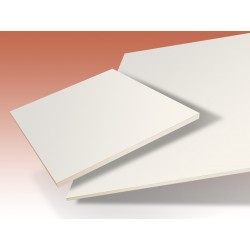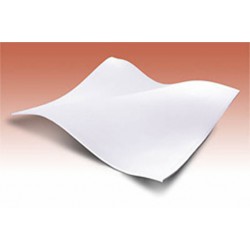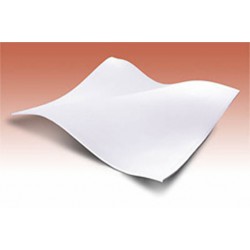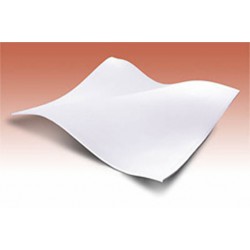No products
Product successfully added to your shopping cart
There are 0 items in your cart. There is 1 item in your cart.
RF Microwave Wedge Absorbers
- EMC Test Equipment
- Transient Generators
- RF Power Amplifiers
- DC - 300 kHz RF Amplifiers
- 10 kHz - 250 MHz RF Amplifiers
- 10 kHz - 400 MHz RF Amplifiers
- 10 kHz - 1 GHz RF Amplifiers
- 80 MHz - 1 GHz RF Amplifiers
- 1 GHz - 2 GHz RF Amplifiers
- 700 MHz - 4.2 GHz RF Amplifiers
- 1 GHz - 6 GHz RF Amplifiers
- 2 GHz - 8 GHz RF Amplifiers
- 6 GHz - 18 GHz RF Amplifiers
- 18 GHz - 40 GHz RF Amplifiers
- Pulse Amplifiers
- RF Field Strength Probes & Meters
- RF Conducted Immunity
- EMC Receivers/EMI Analyzers
- EMC Antennas
- Coupling Decoupling Networks (CDN's)
- Line Impedance Stabilization Networks (LISN's)
- RF Test Equipment
- EMC Probes
- EMC Measurement & Equipment Software
- Power Supplies
- Electrical Safety Analyzers
- High Precision Laboratory Power Analyzers & Meters
- Anechoic Chambers
- Over-the-Air (OTA) Test Chambers
- EMI RF Shielded Tent Enclosures
- RF Shielded Rooms
- EMC Absorber
- Positioning Equipment
- EMC/EMI Test Setup
- GTEM Cells / TEM Cells
- Reverberation Chambers
- Used RF Anechoic Chambers
- EMC Chamber Filters
- EMC Chamber Shielding Gaskets
- RF Shielded Doors
- Anechoic Chamber Accessories
- Fully Anechoic (FAR) Test Chambers
- Manufacturers
- 3ctest
- AE Techron
- AH Systems
- Amplifier Research
- Boonton
- Com-Power
- Diamond Engineering
- EM Test (Ametek CTS)
- EMC Partner
- EMC Test Design
- Empower High Power RF Amplifiers
- ETS-lindgren
- Log Periodic Dipole Array Antenna
- Near Field Probe Sets
- Double Ridge Horn Antennas
- Biconical Antennas
- Quad Ridge Horn Antennas
- Electric Field Probes
- GTEM's
- Positioners & Tripods
- Loop Antennas
- Biconilog Antennas
- LISN's (Line Impedance Stabilization Network)
- Shielded Enclosures/Rooms
- Monopole Antennas
- Field Generating Antennas
- Fischer Custom Communications
- Haefely Hipotronics
- Haefely EFT/Burst Immunity Test Systems
- Haefely Surge Combination Wave Test Systems
- Haefely Surge Damped Oscillating Wave Test Systems
- Haefely Electrostatic Discharge Test Systems (ESD)
- Haefely Surge Ring Wave Test Systems
- Haefely Surge Telecom Wave Test Systems
- Haefely Magnetic Field Test Systems
- Haefely CDN's (Coupling/Decoupling Networks)
- IFI Amplifiers
- Keysight (Agilent)
- MVG - Microwave Vision Group
- PMM / Narda
- Rohde & Schwarz RF Test Equipment
- Rohde & Schwarz Broadband RF Amplifiers
- Rohde & Schwarz Spectrum Analyzers
- Rohde & Schwarz Compliant EMI Test Receivers
- Rohde & Schwarz Isotropic RF Probes
- Rohde & Schwarz RF Signal Generators
- Rohde & Schwarz RF Switches
- Rohde & Schwarz Oscilloscopes
- Rohde & Schwarz RF Power Meters
- Rohde & Schwarz RF Power Sensors
- Schloder
- Schwarzbeck Mess-Elektronik
- Schwarzbeck Antennas
- Schwarzbeck Automotive Antennas
- Schwarzbeck Broadband Horn Antennas
- Schwarzbeck Biconical Antennas
- Schwarzbeck Logarithmic Periodic Broadband Antennas
- Schwarzbeck Stacked Log-Periodic Broadband Antennas
- Schwarzbeck Biconic Log-Periodic Antennas
- Schwarzbeck Dipole Antennas
- Schwarzbeck Rod Antennas
- Schwarbeck Antenna Baluns / Holders
- Schwarzbeck LISN Line Impedance Stabilisation Networks
- Schwarbeck Decoupling & Absorbing Clamps
- Schwarzbeck Field Probes
- Schwarzbeck Helmholtz Coils
- Schwarzbeck Antenna Masts
- Schwarzbeck Coupling/Decoupling Networks
- Schwarzbeck Antennas
- Solar Electronics
- Teseq (Schaffner)
- Teseq Automotive Transient Generators
- Teseq RF Test Equipment
- Teseq EFT/Burst Generators
- Teseq RF Immunity Generators
- Teseq ESD Guns
- Teseq Surge Generators
- Teseq Harmonics & Flicker Solutions
- Teseq Dips, Interrupts & Variations Equipment
- Teseq Ring Wave Generators
- Teseq Oscillatory Waves Generators
- Teseq Absorbing Clamps / Ferrite Tube
- Teseq EMC Antennas
- Teseq Current Probes
- Teseq Coupling Networks
- Thermo Keytek
- Vicreate
- Compliance Standards
- International (IEC/EN)
- EN/IEC 61000-3-2
- EN/IEC 61000-3-3
- IEC 61000-3-11
- IEC / EN 610000-3-12
- EN/IEC 61000-4-2
- EN/IEC 61000-4-3
- EN/IEC 61000-4-4
- EN/IEC 61000-4-5
- EN/IEC 61000-4-6
- EN/IEC 61000-4-7
- EN/IEC 61000-4-8
- EN/IEC 61000-4-9
- EN/IEC 61000-4-10
- EN/IEC 61000-4-11
- EN/IEC 61000-4-12
- EN/IEC 61000-4-16
- EN/IEC 61000-4-18
- EN/IEC 61000-4-19
- EN/IEC 61000-4-20
- EN/IEC 61000-4-21
- EN/IEC 61000-4-29
- EN/IEC 61000-4-31
- IEC 61000-4-39
- EN/IEC 62132
- SEMI F47 Voltage Sag Immunity
- Product Standards
- Military & Aerospace Standards
- Automotive EMC Standards
- CISPR Standards
- Telecom Testing
- ANSI/IEEE Standards
- FCC Part 15
- FCC Part 30
- International (IEC/EN)
- Application/Test Type
- Radiated Immunity
- Bulk Current Injection Testing
- RF Emissions Testing
- Conducted Immunity
- Conducted Emissions
- Antenna Pattern Measurement
- CE Mark Testing
- Intentional Radiator Testing
- Pulsed HIRF Radar
- Over-the-Air (OTA) Testing
- 5G Test Solutions
- Automotive EMC
- SAR Measurement Equipment
- Radiated Emissions
- Battery Simulator Test Equipment
- Services
- Clearance
Viewed products
-

Cuming Microwave C-RAM...
High loss coating Can be brushed or...
 View larger
View larger Cuming Microwave C-RAM 369 and 369-RT Brushable Iron Epoxy Surface Wave Coating
New
- High loss coating
- Can be brushed or sprayed on metal surfaces to attenuate surface waves
- Two component epoxy resin filled with particles
- High magnetic loss tangent in the microwave frequency range
- Can be applied to selected parts of antennas
PDF Downloads
Test Equipment Description
The C-RAM 369 is a high loss coating which can be brushed or sprayed on metal surfaces to attenuate surface waves. C-RAM 369 is a two component epoxy resin filled with particles having a high magnetic loss tangent in the microwave frequency range.
When an object is illuminated by radar, surface currents are induced to flow on the object, causing it to radiate energy in all directions. Radiation occurs primarily at discontinuities in the skin. These are joints, trailing edges and places where there is a change in contour. Application of C-RAM 369 to these areas will suppress the surface currents and significantly reduce the radiation. The edge of the coating is usually serrated or saw toothed to provide a transition.
C-RAM 369 can be applied to selected parts of antennas to adjust patterns and reduce side lobes. For example, the edge of a parabola can be coated for this purpose. Here again serration of the edge of the coating pointed toward the center is useful. The coating can also be used in transmission line systems as an attenuator.
The coating thickness is applied approx 0.1 – 0.2 mm at a time, and can be built up with multiple coats. Performance depends on wavelength as well as on thickness tapers across the surface. Surfaces should be prepared in accordance with standard procedures. Cuming Microwave can supply information for specific applications.
| TYPICAL PROPERTIES | |
| Color | Grey |
| Maximum use temperature | 150°C |
| Specific Gravity | 3.5 |
| Shore Durometer, D | 80 |
| Volume Resistivity | >1014 ohm-cm |
| Dielectric Strength | >4 kV/mm |
AVAILABILITY
C-RAM 369 is sold in two component kits; Part A is the magnetically filled epoxy resin, and Part B is the curing agent. It is sold as: 3 pound (1.4 kg) PINT; 6 pound (2.7 kg) QUART; and 25 pound (11.3 kg) GALLON.
INSTRUCTIONS FOR BRUSHING ON
- Thoroughly mix the contents of the can of Part A, as settling may have occurred. Part B requires no mixing.
- For each 100 parts by weight of Part A add 6 parts of Part B. Mix thoroughly, preferably with a power mixer. Then add small quantities of lacquer thinner while mixing to get a desired viscosity for brushing. Brush on a thickness that will not flow on the object being coated. If greater thickness is needed, apply additional coats after the first has at least partially cured.
- Allow 24 hours at room temperature for partial cure. Apply second coat, if needed, at this point. Allow 24 hours for each coat. Final cure is at 90°C for at least 3 hours.
INSTRUCTIONS FOR SPRAYING
Mix 100:6 proportions of Parts A and B, then add lacquer thinner, just as in the brush on instructions. A lower viscosity will be needed to achieve good spraying consistency. Shake spray can between each spray to avoid settling of filler particles. Do not continue to spray if coating is flowing on the object. Allow to cure for 24 hours, and continue with second coat. Mix can be stored in a freezer between uses, but allow mix to come to room temperature before using again. Mix thoroughly before using.
C-RAM 369-RT
C-RAM 369 coating is available in a room temperature curing version, designated C-RAM 369-RT. The cured properties of this material are essentially the same as those of C-RAM 369.
C-RAM 369-RT uses a different part B curing agent, which will begin reacting within 30 minutes of mixing, at room temperature, and will fully cure within 1 hour. One must factor in the tradeoffs between a fast cure and a limited pot life when considering this option.
The curing agent is an amine, and is designated as a Class 8 corrosive material by the DOT and IATA. Proper precautions must be taken when handling; consult the MSDS.


